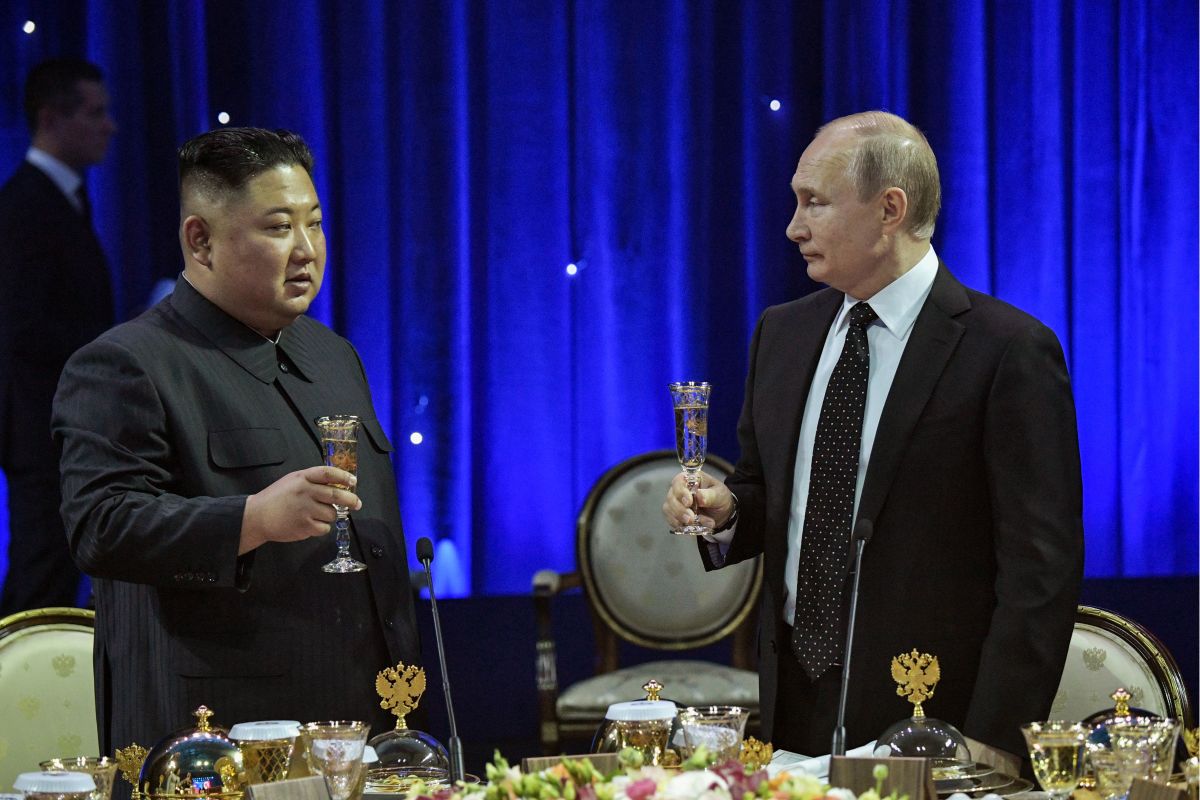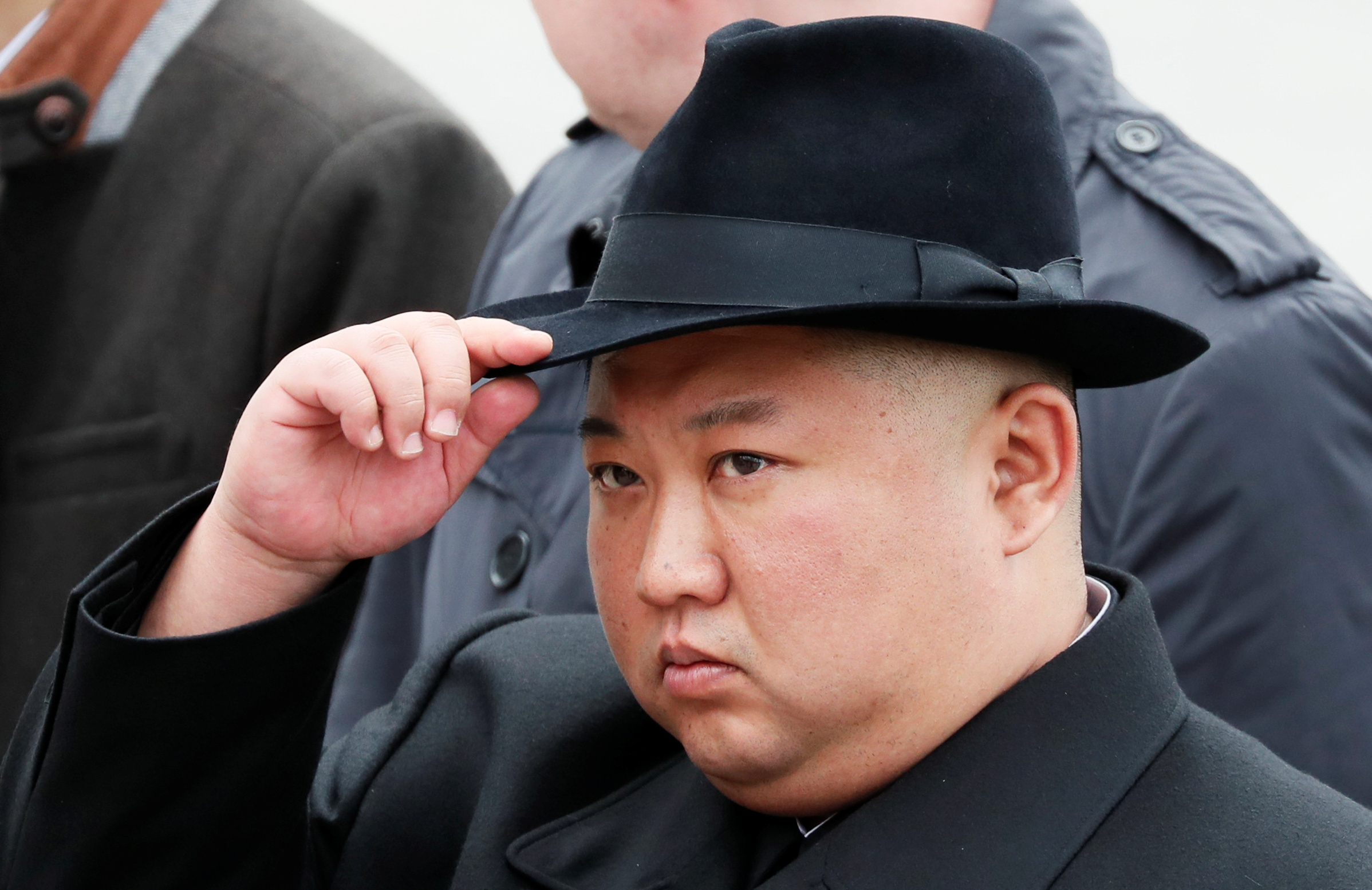North Korea Continues to Develop Its Nuclear Forces
North Korea is conducting further missile tests to check new types of weapons and increase the credibility of its nuclear deterrence. The adoption of a new nuclear doctrine that allows pre-emptive nuclear strikes also serves this purpose. North Korea is taking advantage of the period of tension between the U.S., Russia, and China, which prevent the UN Security Council from adopting further sanctions. In this situation, the U.S. and its allies should strengthen defence and deterrence capabilities against North Korea and set achievable goals to reduce the risk of escalation of tensions before possible negotiations.
.jpg) Kim Jae-Hwan / Zuma Press / Forum
Kim Jae-Hwan / Zuma Press / Forum
Development of Missile Potential and New Nuclear Doctrine
This year alone, North Korea has launched a record number of around 80 missiles of various types and ranges, most of them (at least 46) in November. It has tested cruise and ballistic missiles of short, intermediate (IRBM, 3,000-5,500 km) and intercontinental (ICBM, 5,500-12,000 km) ranges. In October, for the first time since 2017, a test rocket (Hwasong-12) flew over Japanese territory. The November test of the Hwasong-17, the world’s largest ICBM fired from a mobile launcher and capable of carrying several nuclear warheads, also demonstrated the development of North Korea’s missile potential.
During a September parliamentary session, North Korea adopted a new nuclear doctrine. The document amends the provisions of the 2013 law that emphasised the deterrent nature of nuclear weapons, de facto excluding their first use by the North. The new regulations permit pre-emptive nuclear strikes in the case of an “imminent” nuclear or conventional attack on the country’s leadership, the command of nuclear forces or other “important targets”, and when, according to the authorities, the use of nuclear weapons would serve to de-escalate a conventional conflict. The doctrine also assumes that a nuclear counter strike will be launched “automatically” in response to an attack on the command-and-control system over the state nuclear forces. Lowering the threshold for the use of nuclear weapons and abandoning the no-first-use pledge serves to deter the U.S. and South Korea and balance their conventional military superiority. North Korea seems to follow a similar logic as Russia. The conditions for the use of nuclear weapons indicated in the North Korean doctrine are similar to those enlisted in the Russian document of 2020. With the adoption of the new doctrine, Kim Jong Un announced that his country will never again engage in talks on denuclearisation.
Conditions for the Development of the Nuclear Deterrent
The accelerated development of the North’s missile potential results from changes that have taken place in its foreign policy after the unsuccessful dialogue with the U.S. in 2018-2019. The failure of Kim Jong Un’s summit with President Donald Trump in Hanoi in February 2019 prompted the North Korean leader to accelerate work on strengthening nuclear deterrence. In January 2021, during the 8th Congress of the Workers’ Party of Korea, Kim announced a five-year plan for the further development of the North’s military potential, including tactical nuclear weapons, missiles capable of carrying multiple nuclear warheads, ICBMs and submarine-launched missiles (SLBMs), hypersonic gliding vehicles, and a nuclear-powered submarine. These investments will serve to increase North Korea’s capability to both withstand an attack and respond to it, requiring the defeat of U.S. anti-missile defence systems. In April, Kim Jong Un also declared the North will develop tactical nuclear weapons, suggesting the possibility of their use against U.S. and South Korean forces in a conventional conflict.
The intensification of North Korea’s missile testing is also a reaction to the tightening of U.S.-South Korea cooperation, manifested by, among others, the resumption of large-scale military drills in recent months. In addition, North Korea is conducting the missiles tests at a favourable time in its view, as the tensions between the U.S., Russia, and China led in May to the latter two vetoing a U.S.-drafted UN Security Council (UNSC) resolution to impose new sanctions on North Korea over its renewed ballistic missile tests.
International Significance
By developing its nuclear missile arsenal, North Korea seeks to undermine the credibility of the U.S. security guarantees for South Korea and weaken their alliance. Testing of intermediate and long-range missiles, theoretically capable of reaching U.S. bases in the region (e.g., on Guam) or even the territory of the continental United States, is intended to increase U.S. fears of a North Korean counterattack and ultimately discourage support for South Korea in a possible conflict. North Korea is also trying to highlight the differences between the U.S. and South Korea on responding to its threats. Tests of short-range missile weapons, possibly capable of carrying tactical nuclear warheads, are intended to increase South Korea’s sense of threat. North Korea wants a situation in which the South will be dissatisfied with the level of American support and will start to raise the need to develop its own nuclear forces (currently, such a discussion is taking place at the academic and expert level), especially since the U.S. also opposes the idea of redeploying its nuclear weapons to the Korean Peninsula. South Korea’s development of its own nuclear weapons would lead to serious tensions within the alliance, including the risk of its termination, which would strengthen the North’s position towards the South.
Striving to weaken American alliances, North Korea is gaining importance in the politics of China and Russia, which are interested in limiting U.S. global influence. The development of the North Korean nuclear and missile potential also undermines the credibility of several decades of U.S. efforts to denuclearise the Korean Peninsula. It shows the limitations of the sanctions regime, the effectiveness of which depends on international cooperation, especially between the permanent members of the UNSC. In order to maintain paralysis of the Council, North Korea sides with China and Russia on issues important to them. In the case of China, this includes backing its policy towards Taiwan. When it comes to Russia, it is about supporting its aggression against Ukraine at the UN forum, recognising the independence of the so-called republics in Donbas, the annexation of four Ukrainian regions, readiness to send workers to the Donbas to rebuild from the war damage, and possibly to supply armaments to the Russian army. To weaken the impact of the sanctions, North Korea also is restoring economic contacts with China and Russia, which were suspended during the pandemic.
Perspectives and Conclusions
North Korea will develop nuclear forces that guarantee the survival of the regime. The consequence of this year’s missile tests will be the resumption of nuclear tests with tactical nuclear warheads. It is possible it will test several warheads of different power at short intervals, like India did in May 1998. According to Stockholm International Peace Research Institute estimates, North Korea has 20-30 nuclear warheads and fissile material to produce another 45-55.
The development of North Korea’s nuclear and missile potential forces the U.S. and its allies to strengthen their defence and deterrent capabilities against North Korea. This is conducted through large-scale drills (such as the Vigilant Storm exercises involving the U.S. and South Korean air forces at the end of October-early November) and the more frequent deploying of American strategic assets (such as aircraft carriers, strategic bombers and nuclear-powered submarines) to the region, as the Biden administration declared in November. In addition to responding militarily, the U.S. and its allies, including South Korea and Japan, are faced with the task of preparing a diplomatic response to the challenges posed by the existence of a de facto nuclear North Korea. The impossibility of dismantling the North Korean nuclear arsenal may lead them to focus on issues other than denuclearisation, assuming that it remains the ultimate goal due to North Korea’s obligations under the Treaty on the Non-Proliferation of Nuclear Weapons and UNSC resolutions. An opportunity to reduce the risk of an escalation of tensions on the Korean Peninsula may be negotiations on arms control and limitation, as well as confidence-building measures and reducing the risk of nuclear weapons use. However, the success of the talks would require mutual readiness to make concessions, such as limitations of the U.S. military presence on the peninsula, North Korea’s suspension of tests, and allowing observers to gain access to selected North Korean nuclear facilities. Right know, though, that seems unlikely.
A political and expert dialogue between the EU and European countries and North Korea could serve to examine its position on possible talks. However, the resumption of the dialogue has been hindered by North Korea’s reluctance to talk to countries emphasising the need for denuclearisation and because of the North’s support for Russia’s aggression against Ukraine. Due to the tightening of Poland’s defence cooperation with South Korea, including the planned deliveries of South Korean armaments, from the Polish perspective the political dialogue on the security environment of both countries and allied cooperation with the U.S. is gaining importance.





